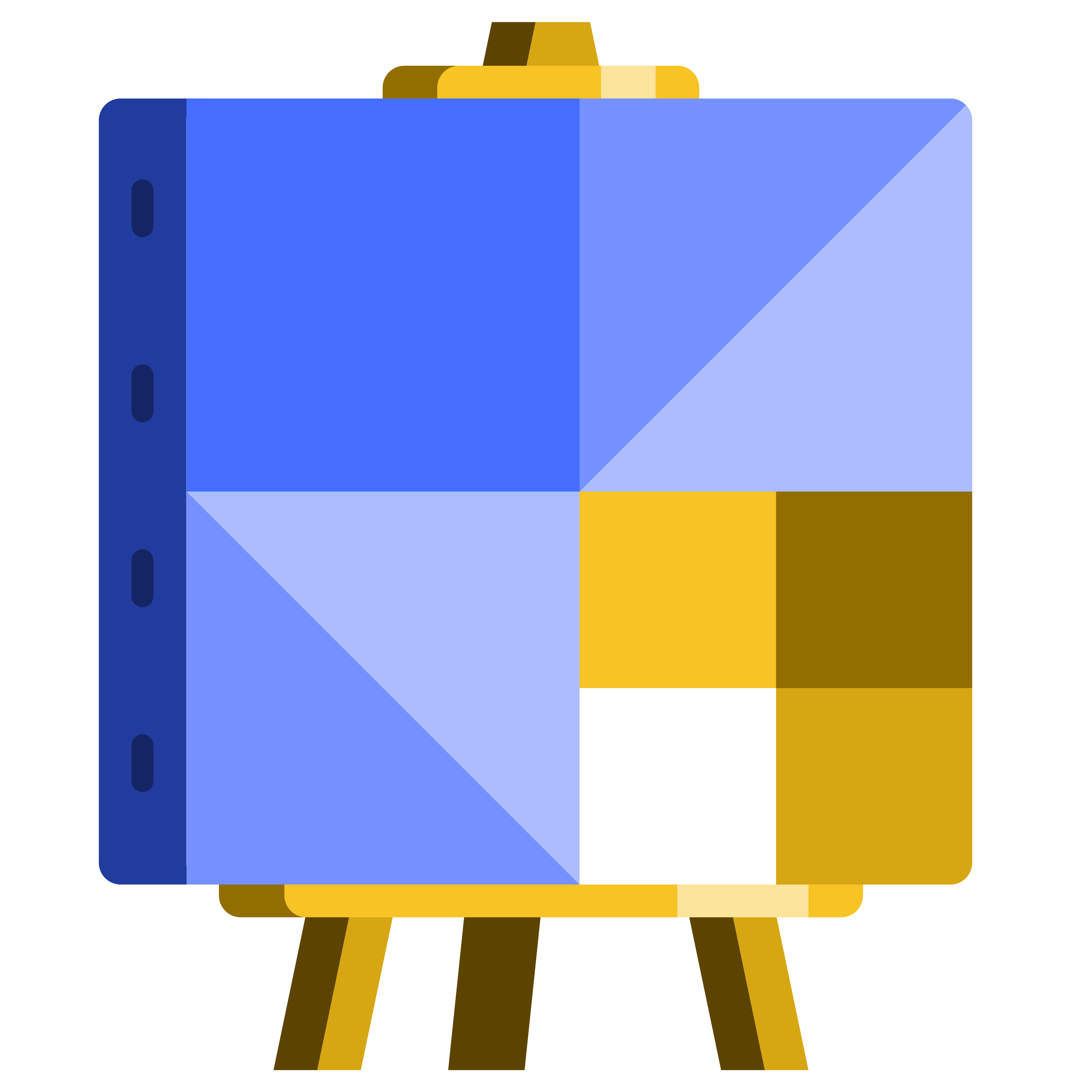Let's find products of unit fractions.
First, let's find how much of this square is red. This small square is 1/4 of the square. The red triangle is half of the small square. So, the red triangle must be 1/8 of the square.
We can also find this by multiplying 1/4 and 1/2. 1/4 multiplied by 1/2 equals 1/8.
Now, let's complete the equation to describe how much of the shape is purple. The purple part is one of 10 equally sized parts.
We can also see that the shape is divided into fifths by rows and the purple part is half of a row. So 1/2 * 1/5 = 110th.
Here we can see the square divided into fifths. When we take 1/2 of 1/5, we can represent this by dividing each row into two, giving us 10 equal parts.
When we multiply unit fractions, we multiply their denominators. Now, let's try it without a visual model. 17th * 1/3. We can multiply 7 by 3 to get 21 for the denominator. The numerator remains 1. Therefore, 17th * 1/3 = 121st.
Let's find what * 1/5 equals 155th.
Since 55 / 5 is 11, we can put an 11 in the denominator. So 1/5 * 11th = 155th.
Which two unit fractions multiply to 1/100th? We know the numerators must be 1.
Out of the numbers here, 4 and 25 multiply together to make 100.
So 1/4 * 125th equal 1/1 100th.
Multiplying unit fractions shows that fraction multiplication means finding a part of a part which results in a smaller piece of the whole.

